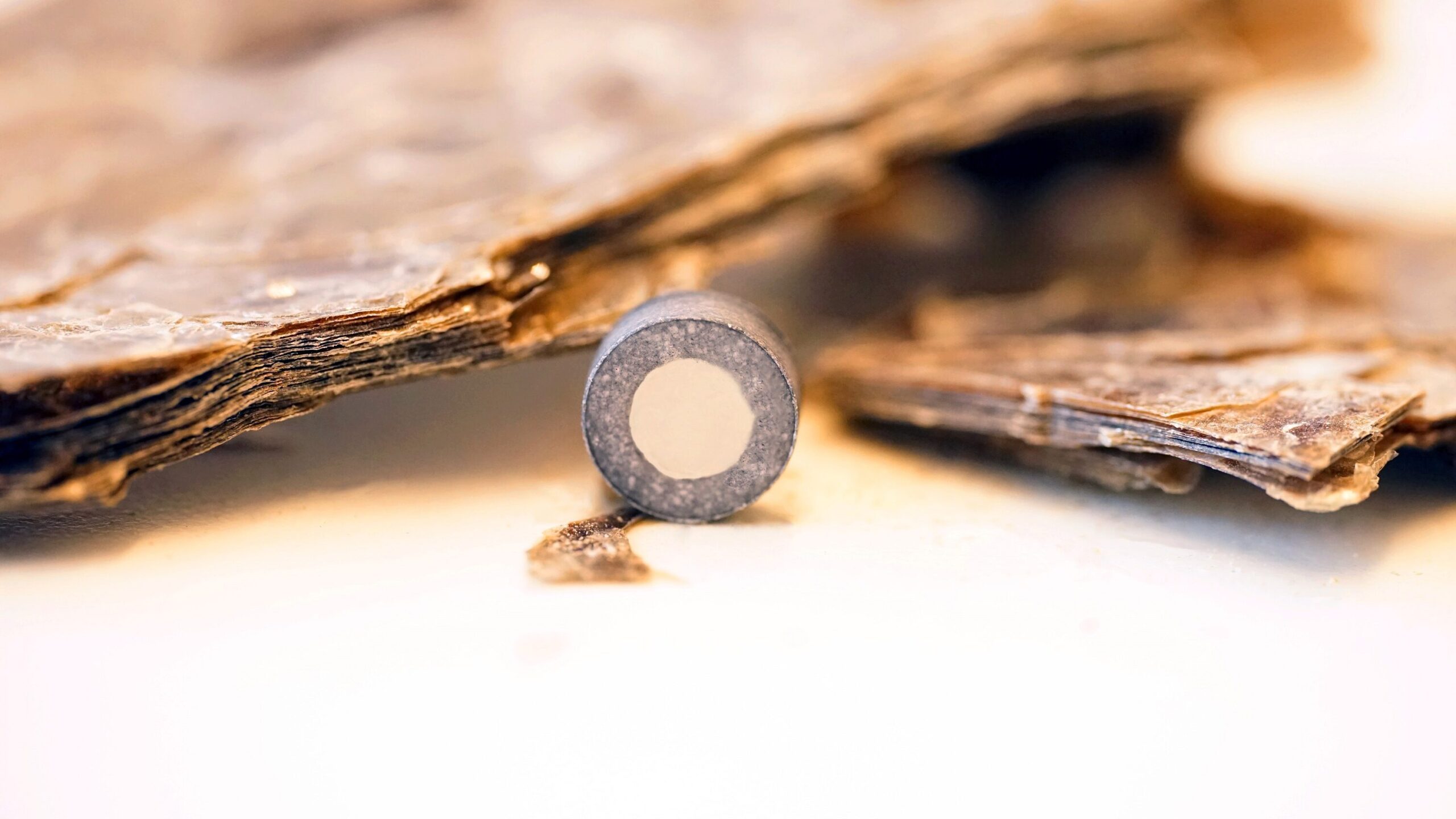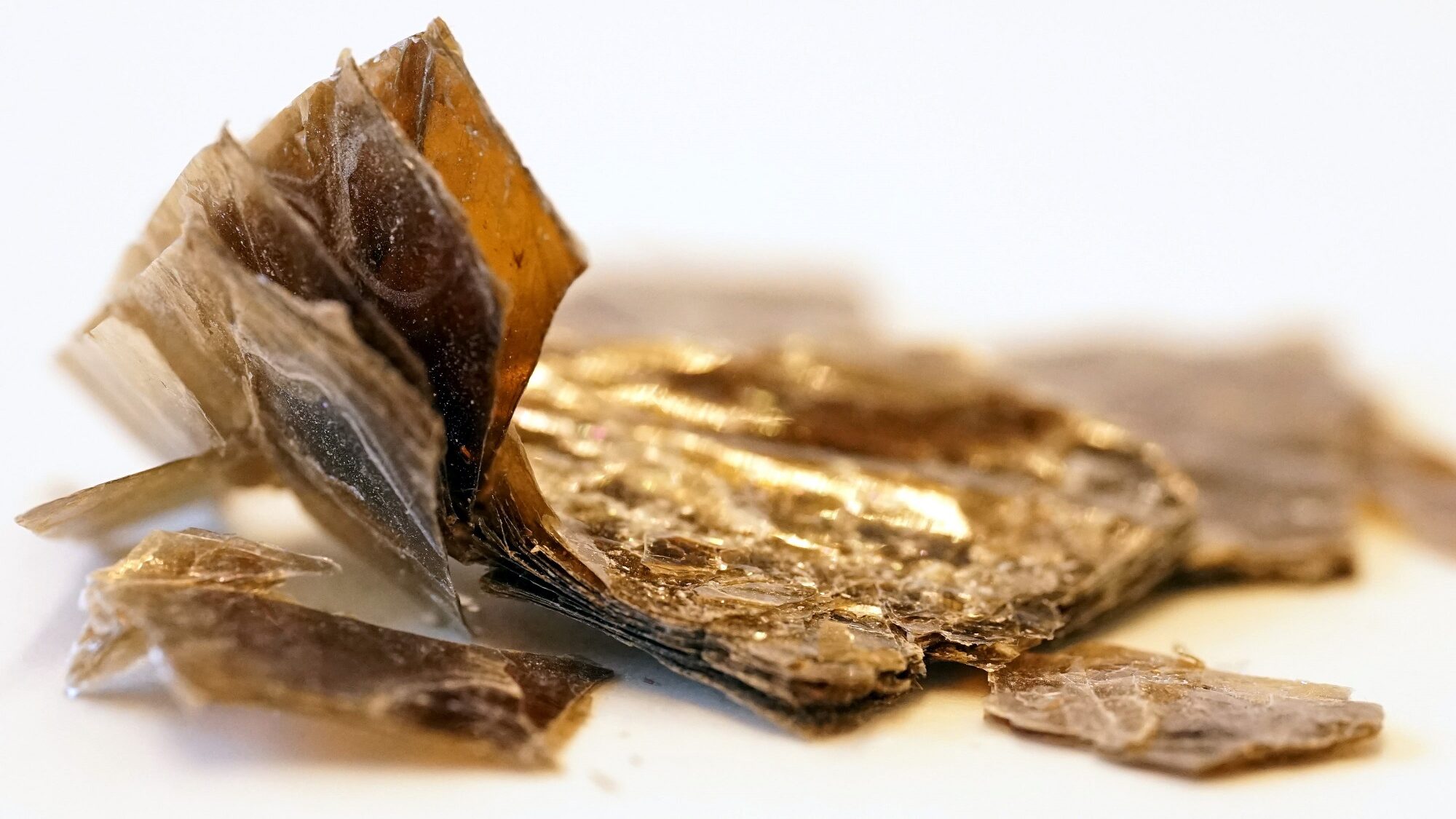Muscovite Namibia-Nano-Pellet (MSNA-NP) is our next certified Nano-Pellet from a mineral, which myStandards produced following the provisions of ISO 17034. Here you will learn about muscovite and why we chose it to be one of our certified reference materials.

Muscovite and its importance as a certified reference material
Muscovite, also known as mica, is a hydrated phyllosilicate mineral of aluminium and potassium with the formula KAl2[(F,OH)2AlSi3O10]. Mica differs from other minerals in its pseudohexagonal crystal form and its perfect cleavage, which allows the crystals to be pulled apart into very thin, elastic plates. Muscovite can be colourless or coloured in shades of grey, brown, green, yellow or rarely purple or red and can be transparent or translucent. Its name derives from Muscovy glass, as the mineral was often used as a cheaper alternative to glass for windows in medieval Russia (Muscovy).
As with most of our other certified reference materials, the conditions under which it is formed influence its chemical composition, which allows the reconstruction of its formation processes.
Laser Ablation Inductively Coupled Plasma Mass Spectrometry (LA-ICP-MS), for example, is suitable for analysing the chemical composition of muscovite. In order for such analyses to give accurate results and thus also the correct conclusions, the analytical instruments must be calibrated with a material that is as similar as possible and has a known chemical composition. Our MSNA-NP is perfectly suited for this purpose. It consists of pure muscovite, without binding agents, is matrix-matched and well characterised.
From muscovite sheets to nano-powder to certified Nano-Pellets

As always, we followed our established procedure for certifying reference materials. All these steps were performed meticulously following ISO 17034 and are mandatory under this standard in order to designate a material or the values attributed to it as certified. In this way, we achieve a consistently high quality. An example of our data evaluation and the certification report with further information can be found on the MSNA-NP product page.
To give a brief overview of how we fully characterized our total of 43 batches and how the values and uncertainties of MSNA-NP were obtained, the main steps of the process are also summarised here.
In the first step after planning, 250 g of muscovite crystals were purchased from a mineral dealer and crushed to a particle size < 2 mm. The identity of the material was confirmed by X-ray diffraction.
Next, the powder was prepared by our team through wet grinding, freeze drying and homogenisation in our production laboratory. To divide the powder, it was processed with a rotary sample splitter, resulting in a total of 43 batches in glass vials, 28 of which were used for characterisation. For storage, the vials were vacuum sealed with silica gel and stored in a desiccator. Chemical analyses were performed in two ISO 17025 accredited laboratories.
To check stability and homogeneity, these are measured on the Nano-Pellets. For this purpose, we produced a total of 47 Nano-Pellets from batch MSNA-NP-B02 and analysed 10 % of them with LA-ICP-MS. To do so, we simulated delivery conditions and used a randomized measurement scheme adapted to a procedure of ASTM Guide E-826-14.
In the final step, we combined the results with the characterisation evaluation ending up with certified values including their combined and expanded uncertainties for a variety analytes, all of which are listed in the certificate.
In case you would like to see additional elements, isotopic ratios or further information which are not in the certificate or certification report feel free to contact us! It is possible to press Nano-Pellets out of the remaining powders for other methods, e.g., LIBS or micro-XRF. These Nano-Pellets, because they lack a homogeneity- and stability test, will not be designated as certified, but are very well characterised for their chemical composition.
Latest news posts:
- How to Build Your Custom Pressed Pellet Set for XRF (32 mm)
- An exciting new project: the development of a Sulphide-Nano-Pellet as a reference material
- 32 mm Pressed Pellets for XRF – an alternative to the Nano-Pellets for XRF!
- New certified reference material from biotite: BTNO-Nano-Pellet
- Muscovite certified reference material: MSNA-Nano-Pellet
